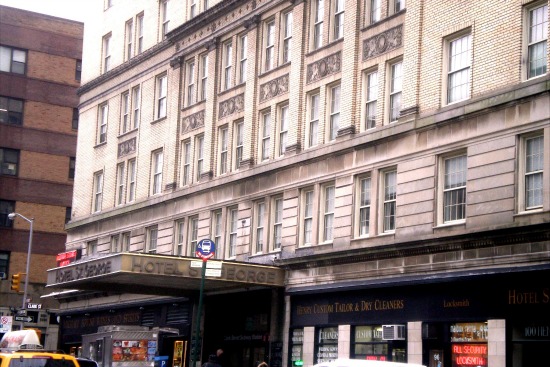Fears over future of iconic Brooklyn Heights St. George Hotel called unfounded

The management company running student housing in the historic St. George Hotel has scotched rumors that a change in use was in the works for the building at 100 Henry St. in Brooklyn Heights. One of the colleges that’s been placing students there has also denied speculation being spread by a Brooklyn Heights activist who worried that the facility might revert to its former use as a home to subsidized and mentally-ill tenants.
Despite the denials, even a hint of such an occurrence raises a spectral blight from the 1970s. Brooklyn Heights had eight marginal hotels operating at that time, and most were filled with welfare tenants and recently-released mental patients placed by city agencies.
Time, political pressure and a changing marketplace cured the problem for all eight hotels: the St. George, the Margaret, the Standish Harbor, the Standish Arms, the Bossert, the Montague, the Pierrepont and the Towers. Several were taken over and rehabilitated by the Watchtower Bible and Tract Society.

Brooklyn Heights
View MoreRead the Brooklyn Height's Press and Cobble Hill News. Find out more about Brooklyn Height's History here.